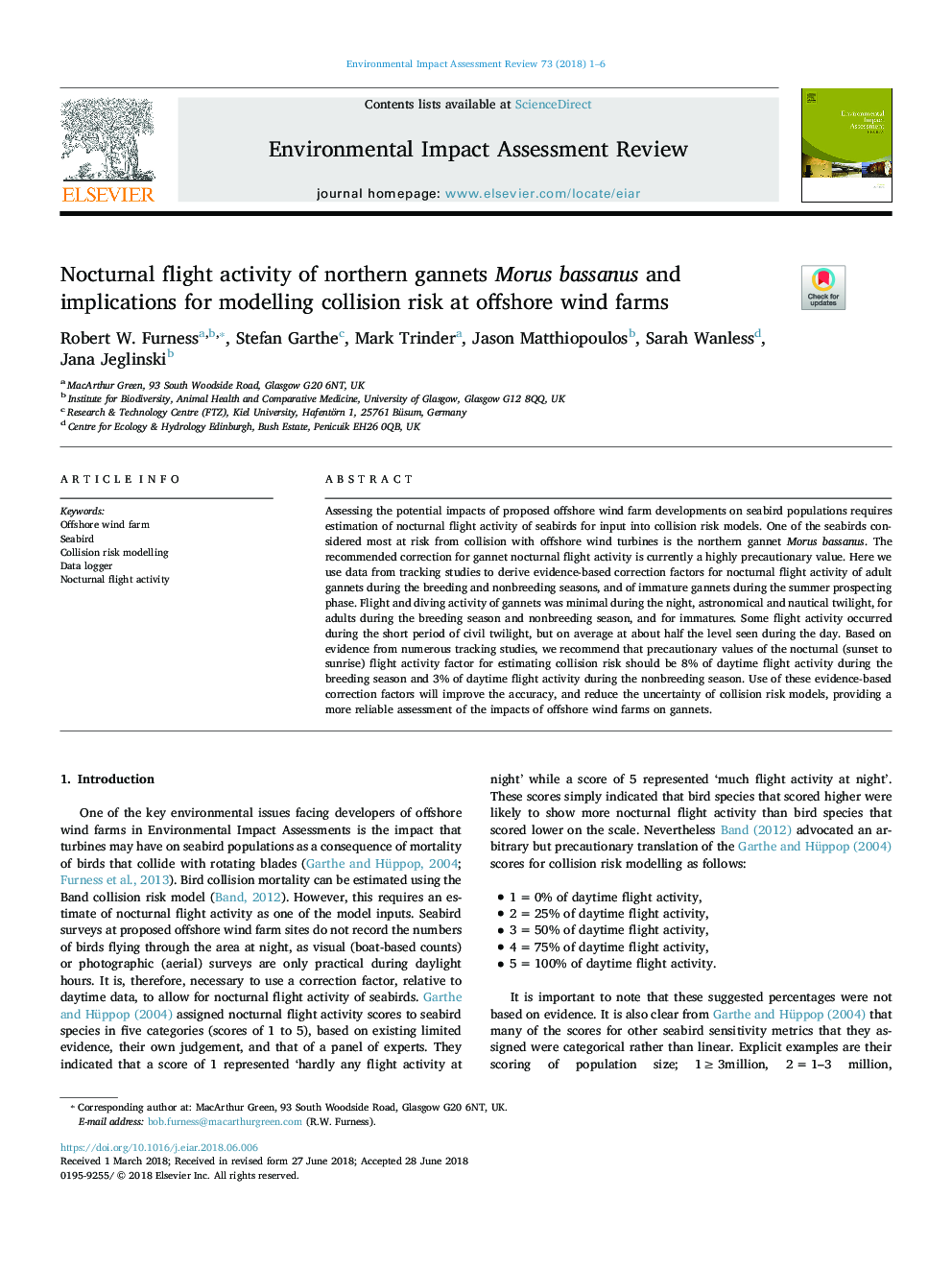| Article ID | Journal | Published Year | Pages | File Type |
|---|---|---|---|---|
| 7464601 | Environmental Impact Assessment Review | 2018 | 6 Pages |
Abstract
Assessing the potential impacts of proposed offshore wind farm developments on seabird populations requires estimation of nocturnal flight activity of seabirds for input into collision risk models. One of the seabirds considered most at risk from collision with offshore wind turbines is the northern gannet Morus bassanus. The recommended correction for gannet nocturnal flight activity is currently a highly precautionary value. Here we use data from tracking studies to derive evidence-based correction factors for nocturnal flight activity of adult gannets during the breeding and nonbreeding seasons, and of immature gannets during the summer prospecting phase. Flight and diving activity of gannets was minimal during the night, astronomical and nautical twilight, for adults during the breeding season and nonbreeding season, and for immatures. Some flight activity occurred during the short period of civil twilight, but on average at about half the level seen during the day. Based on evidence from numerous tracking studies, we recommend that precautionary values of the nocturnal (sunset to sunrise) flight activity factor for estimating collision risk should be 8% of daytime flight activity during the breeding season and 3% of daytime flight activity during the nonbreeding season. Use of these evidence-based correction factors will improve the accuracy, and reduce the uncertainty of collision risk models, providing a more reliable assessment of the impacts of offshore wind farms on gannets.
Keywords
Related Topics
Physical Sciences and Engineering
Energy
Renewable Energy, Sustainability and the Environment
Authors
Robert W. Furness, Stefan Garthe, Mark Trinder, Jason Matthiopoulos, Sarah Wanless, Jana Jeglinski,
